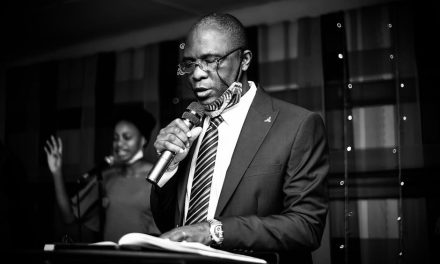Table of Contents
- Introduction
- Beauford Delaney: A Journey Through Color and Emotion
- The Influence of Harlem Renaissance on Beauford Delaney
- Beauford Delaney’s Exploration of Identity in Art
- The Legacy of Beauford Delaney: Impact on Contemporary Artists
- Beauford Delaney and the Intersection of Race and Art
- The Role of Spirituality in Beauford Delaney’s Work
- Beauford Delaney: A Study of Portraiture and Self-Representation
- The Evolution of Beauford Delaney’s Artistic Style
- Beauford Delaney: A Voice for the LGBTQ+ Community in Art
- Q&A
- Conclusion
“Beauford Delaney: A Journey Through Vision, Identity, and Timeless Legacy.”
Introduction
Beauford Delaney was an influential African American painter known for his vibrant use of color and expressive brushwork, which captured the essence of his subjects and the complexities of his identity. Born in 1901 in Knoxville, Tennessee, Delaney’s artistic journey took him from the segregated South to the vibrant cultural landscape of Harlem during the Harlem Renaissance. His work reflects a deep exploration of vision and identity, often intertwining themes of race, spirituality, and personal experience. Delaney’s legacy is marked by his ability to transcend the boundaries of his time, leaving an indelible impact on the art world and inspiring future generations of artists to explore their own identities through their work. This exploration of Delaney’s life and art reveals not only the struggles he faced as a Black artist but also the profound beauty and resilience that characterized his creative expression.
Beauford Delaney: A Journey Through Color and Emotion
Beauford Delaney, an influential figure in the world of American art, is celebrated for his vibrant use of color and profound emotional depth. Born in 1901 in Knoxville, Tennessee, Delaney’s artistic journey began in a racially segregated environment that shaped his identity and worldview. His early exposure to the rich cultural tapestry of the South, combined with the struggles of African American life, informed his artistic vision and provided a foundation for his later works. As he moved to New York City in the 1920s, Delaney became immersed in the Harlem Renaissance, a period that not only celebrated African American culture but also fostered a sense of community among artists, writers, and musicians. This vibrant milieu significantly influenced his artistic development, allowing him to explore themes of identity, belonging, and the human experience.
Delaney’s work is characterized by a unique approach to color, which he employed to convey emotion and depth. His palette often featured bold, expressive hues that transcended mere representation, inviting viewers to engage with the emotional undercurrents of his subjects. This innovative use of color can be seen in his portraits, where he captured the essence of his sitters not just through their likeness but through the emotional resonance of the colors he chose. For Delaney, color was not merely a tool for aesthetic appeal; it was a language through which he communicated complex feelings and experiences. This approach allowed him to create a visual dialogue that resonated with audiences, drawing them into the emotional landscape of his work.
As Delaney’s career progressed, he began to explore abstraction, further pushing the boundaries of his artistic expression. His later works, characterized by swirling forms and dynamic compositions, reflect a deepening engagement with the spiritual and the metaphysical. This shift towards abstraction can be interpreted as a response to his own evolving identity and the tumultuous social landscape of the time. Delaney’s art became a means of grappling with his personal struggles, including his experiences with mental health and his search for belonging in a world that often marginalized him. Through abstraction, he found a way to express the inexpressible, creating a space where emotion and color intertwined to form a powerful narrative.
Moreover, Delaney’s legacy extends beyond his artistic contributions; it encompasses his role as a mentor and advocate for other artists. He was known for his generosity and willingness to share his knowledge, fostering a sense of community among his peers. This commitment to nurturing talent is evident in his relationships with other prominent figures of the time, including James Baldwin, who regarded Delaney as a significant influence on his own work. Their friendship exemplified the interconnectedness of art and identity, as both men navigated the complexities of race, sexuality, and self-expression in their respective fields.
In conclusion, Beauford Delaney’s journey through color and emotion is a testament to the power of art as a vehicle for personal and collective expression. His innovative use of color, coupled with his exploration of abstraction, allowed him to convey the complexities of human experience in a way that resonates with audiences even today. As we reflect on his legacy, it becomes clear that Delaney’s work not only enriches the canon of American art but also serves as a reminder of the enduring impact of identity and emotion in the creative process. Through his art, Delaney invites us to explore our own emotional landscapes, encouraging a deeper understanding of ourselves and the world around us.
The Influence of Harlem Renaissance on Beauford Delaney
Beauford Delaney, an influential figure in American art, emerged during a time when the Harlem Renaissance was reshaping the cultural landscape of the United States. This vibrant movement, which flourished in the 1920s and 1930s, celebrated African American culture, art, and identity, providing a fertile ground for artists like Delaney to explore their creative visions. The Harlem Renaissance not only influenced Delaney’s artistic style but also played a crucial role in shaping his identity as an artist and individual.
As Delaney navigated the complexities of his identity, he found inspiration in the rich tapestry of African American life that the Harlem Renaissance encapsulated. The movement was characterized by a profound sense of pride and a desire to redefine the narrative surrounding Black identity in America. This cultural awakening resonated deeply with Delaney, who sought to express the nuances of his own experiences as a Black artist. The works of contemporaries such as Langston Hughes, Zora Neale Hurston, and Claude McKay provided a backdrop against which Delaney could articulate his vision, allowing him to draw from a wellspring of shared experiences and collective aspirations.
Moreover, the Harlem Renaissance fostered an environment that encouraged experimentation and innovation in the arts. Delaney, who initially trained in traditional techniques, began to embrace modernist approaches that reflected the dynamic spirit of the era. The movement’s emphasis on self-expression and individuality inspired him to explore abstraction and color in ways that transcended conventional boundaries. This shift not only marked a departure from his earlier works but also aligned him with the broader trends of modern art, which were gaining traction during this period. As he experimented with vibrant colors and bold forms, Delaney’s paintings began to reflect the emotional depth and complexity of the African American experience, capturing the essence of a community in transition.
In addition to the artistic influences, the Harlem Renaissance provided Delaney with a sense of belonging and community. The era was marked by a gathering of intellectuals, artists, and musicians who shared a commitment to elevating African American culture. This camaraderie was vital for Delaney, who often grappled with feelings of isolation and alienation. The connections he forged with fellow artists and thinkers not only enriched his work but also reinforced his sense of purpose as an artist. The salons and gatherings of Harlem became a crucible for ideas, where Delaney could engage in discussions that challenged societal norms and explored the complexities of race, identity, and creativity.
Furthermore, the legacy of the Harlem Renaissance extended beyond its immediate impact on Delaney’s work; it laid the groundwork for future generations of artists. By embracing the themes of identity, resilience, and cultural pride, Delaney contributed to a narrative that would inspire countless others. His exploration of color and form can be seen as a continuation of the dialogue initiated by the Harlem Renaissance, bridging the past with the future. As such, Delaney’s work serves as a testament to the enduring influence of this pivotal movement, reminding us of the power of art to reflect and shape the human experience.
In conclusion, the Harlem Renaissance profoundly influenced Beauford Delaney’s artistic journey, shaping his vision, identity, and legacy. Through his engagement with the movement’s themes and the community it fostered, Delaney not only found his voice as an artist but also contributed to a broader cultural narrative that continues to resonate today. His work stands as a vibrant testament to the transformative power of art, reflecting the complexities of identity and the enduring quest for self-expression.
Beauford Delaney’s Exploration of Identity in Art
Beauford Delaney, an influential figure in the American art scene, is renowned for his profound exploration of identity through his vibrant and emotive works. Born in 1901 in Knoxville, Tennessee, Delaney’s early life was steeped in the complexities of race and identity, themes that would later permeate his artistic expression. As an African American artist navigating the predominantly white art world of the early to mid-20th century, Delaney’s experiences shaped his understanding of self and community, which he translated into his art.
Delaney’s journey began in the segregated South, where he was exposed to both the beauty and the struggles of African American life. This duality became a cornerstone of his artistic vision. His move to New York City in the 1920s marked a significant turning point, as he became immersed in the Harlem Renaissance, a cultural movement that celebrated African American identity and creativity. During this period, Delaney’s work began to reflect the vibrancy of the Harlem community, characterized by bold colors and dynamic forms. His portraits of friends and fellow artists not only captured their likenesses but also conveyed a deeper sense of their inner lives, revealing the complexities of their identities.
Transitioning from the Harlem Renaissance to the post-war era, Delaney’s art evolved, reflecting his personal struggles and the broader societal changes occurring around him. His exploration of identity became increasingly introspective, as he grappled with his own sense of self amidst the pressures of societal expectations and racial discrimination. This internal conflict is poignantly illustrated in his abstract works, where color and form take precedence over representational accuracy. The swirling hues and dynamic compositions serve as a metaphor for the fluidity of identity, suggesting that it is not a fixed concept but rather a constantly evolving narrative shaped by personal and collective experiences.
Moreover, Delaney’s identity as a gay man further complicated his artistic expression. Living openly in a time when homosexuality was often stigmatized, he infused his work with themes of love, longing, and acceptance. His relationships with other artists and intellectuals, including the likes of James Baldwin, provided a supportive network that allowed him to explore these themes more freely. The interplay of race and sexuality in his work invites viewers to consider the multifaceted nature of identity, challenging them to look beyond surface appearances to understand the deeper emotional truths that lie beneath.
As Delaney’s career progressed, his art garnered recognition not only for its aesthetic qualities but also for its profound commentary on identity. His later works, characterized by a more abstract approach, reflect a sense of liberation and transcendence. The vibrant colors and expressive brushstrokes evoke a sense of joy and resilience, suggesting that identity, while shaped by external factors, can also be a source of strength and empowerment.
In conclusion, Beauford Delaney’s exploration of identity in art is a testament to his ability to navigate the complexities of race, sexuality, and selfhood. Through his innovative use of color and form, he invites viewers to engage with the multifaceted nature of identity, encouraging a deeper understanding of the human experience. Delaney’s legacy endures not only in the art world but also in the ongoing conversations about identity and representation, making him a pivotal figure in the narrative of American art. His work continues to inspire new generations of artists and scholars, reminding us of the power of art to reflect and shape our understanding of who we are.
The Legacy of Beauford Delaney: Impact on Contemporary Artists

Beauford Delaney, an influential figure in the world of American art, has left an indelible mark on contemporary artists, shaping their understanding of identity, vision, and the complexities of the human experience. His unique approach to color, form, and abstraction not only reflects his personal journey but also resonates with the broader themes of race, sexuality, and spirituality that continue to inspire modern creators. As we delve into the legacy of Delaney, it becomes evident that his work transcends mere aesthetics; it serves as a powerful commentary on the struggles and triumphs of marginalized communities.
Delaney’s exploration of identity is particularly significant in the context of contemporary art. His experiences as a Black gay man in the early to mid-20th century informed his artistic vision, allowing him to navigate and articulate the nuances of his identity through his work. This intersectionality has become increasingly relevant in today’s art scene, where many artists are embracing their multifaceted identities to challenge societal norms and expectations. By examining Delaney’s use of vibrant colors and emotive forms, contemporary artists find inspiration to express their own narratives, often drawing from personal experiences that reflect broader cultural dialogues.
Moreover, Delaney’s commitment to abstraction has paved the way for a new generation of artists who seek to break free from traditional representational forms. His ability to convey emotion and spirituality through color and texture encourages contemporary creators to explore their own interpretations of abstraction. This shift towards a more subjective and emotional approach to art allows for a deeper connection between the artist and the viewer, fostering an environment where personal and collective experiences can be shared and understood. As artists today grapple with the complexities of their identities, they often look to Delaney’s work as a guiding light, illustrating the power of abstraction to communicate profound truths.
In addition to his exploration of identity and abstraction, Delaney’s legacy is also evident in the way he engaged with the art community. His relationships with other artists, writers, and intellectuals of his time, including figures like James Baldwin and Langston Hughes, highlight the importance of collaboration and dialogue in the creative process. This spirit of community continues to thrive among contemporary artists, who often seek to build networks that foster support and exchange of ideas. By embracing the collaborative ethos that Delaney exemplified, today’s artists are not only enriching their own practices but also contributing to a more inclusive and diverse art world.
Furthermore, Delaney’s work serves as a reminder of the importance of visibility and representation in the arts. As contemporary artists strive to amplify underrepresented voices, they draw upon Delaney’s legacy to advocate for greater inclusivity within the art community. His life and work challenge the status quo, urging artists to confront issues of race, sexuality, and identity head-on. This ongoing dialogue is crucial in shaping a more equitable future for the arts, where diverse perspectives are celebrated and valued.
In conclusion, Beauford Delaney’s impact on contemporary artists is profound and multifaceted. His exploration of identity, commitment to abstraction, and emphasis on community continue to resonate with modern creators, inspiring them to engage with their own narratives and challenge societal norms. As artists reflect on Delaney’s legacy, they not only honor his contributions but also pave the way for future generations to explore the rich tapestry of human experience through their art. In this way, Delaney’s vision remains a vital force in the ongoing evolution of contemporary art.
Beauford Delaney and the Intersection of Race and Art
Beauford Delaney, an influential figure in the American art scene, navigated the complex interplay of race and identity throughout his career, leaving an indelible mark on the landscape of modern art. Born in 1901 in Knoxville, Tennessee, Delaney was a product of the Jim Crow South, a context that profoundly shaped his artistic vision and personal identity. His early experiences in a racially segregated society informed not only his understanding of the world but also his approach to art, which often served as a medium for exploring themes of race, belonging, and the human condition.
As Delaney moved to New York City in the 1920s, he became immersed in the vibrant cultural milieu of the Harlem Renaissance. This period was characterized by a flourishing of African American art, literature, and music, and it provided a fertile ground for Delaney’s artistic development. He interacted with prominent figures such as Langston Hughes and Zora Neale Hurston, who were also grappling with the complexities of race and identity. Through these connections, Delaney found a community that encouraged him to express his experiences and emotions, ultimately leading to a distinctive style that blended abstraction with elements of expressionism.
Delaney’s work often reflected his internal struggles with identity, particularly as a Black artist in a predominantly white art world. His paintings, characterized by vibrant colors and dynamic forms, conveyed a sense of both personal and collective experience. The use of color in his work was not merely aesthetic; it was deeply symbolic, representing the emotional and psychological states of his subjects. This approach allowed him to transcend the limitations imposed by racial stereotypes, inviting viewers to engage with the deeper narratives of his identity and the broader African American experience.
Moreover, Delaney’s exploration of race was not confined to his own identity; it extended to the representation of the Black community as a whole. His portraits often depicted friends and fellow artists, capturing their essence while simultaneously challenging the prevailing narratives of Black life in America. By focusing on the individuality of his subjects, Delaney sought to dismantle the monolithic portrayals that were often perpetuated in mainstream culture. This commitment to authenticity and representation was a radical act in itself, as it asserted the complexity and richness of Black identity against a backdrop of systemic racism.
As Delaney’s career progressed, he faced increasing challenges related to his mental health, which ultimately led him to Paris in the 1950s. In this new environment, he found a sense of freedom that allowed him to further explore his artistic vision without the constraints of American racial politics. Paris became a sanctuary where he could delve into his identity as both an artist and a Black man, producing works that resonated with themes of transcendence and spirituality. His time in Europe marked a significant evolution in his style, as he embraced abstraction more fully, reflecting a deeper engagement with the emotional and metaphysical aspects of existence.
In conclusion, Beauford Delaney’s legacy is intricately tied to his exploration of race and identity through art. His ability to navigate the complexities of his experiences as a Black artist in America, while also embracing the universal themes of humanity, has left a lasting impact on the art world. Delaney’s work continues to inspire contemporary artists and scholars, serving as a reminder of the power of art to challenge societal norms and foster understanding across cultural divides. Through his vibrant canvases, Delaney not only captured the essence of his own identity but also contributed to a broader dialogue about race, representation, and the transformative potential of art.
The Role of Spirituality in Beauford Delaney’s Work
Beauford Delaney, an influential figure in the American art scene, is often celebrated for his vibrant use of color and emotive brushwork. However, a deeper examination of his work reveals that spirituality played a pivotal role in shaping his artistic vision and identity. Delaney’s exploration of spirituality is not merely a backdrop to his art; it is intricately woven into the fabric of his creative process and the themes he pursued throughout his career. This connection to the spiritual realm can be traced back to his early life, where he was exposed to a rich tapestry of religious and cultural influences that would later inform his artistic expression.
Growing up in Knoxville, Tennessee, Delaney was surrounded by the African American church culture, which emphasized the importance of faith and community. This environment instilled in him a sense of spirituality that transcended traditional religious boundaries. As he moved to New York City, Delaney encountered a diverse array of artistic movements and philosophies, yet he remained anchored in his spiritual roots. This duality allowed him to synthesize various influences, creating a unique artistic language that resonated with both personal and universal themes.
Delaney’s work often reflects a quest for transcendence, a desire to capture the ineffable qualities of existence. His use of color is particularly noteworthy; the vibrant hues and dynamic compositions evoke a sense of movement and energy that suggests a deeper spiritual connection. For instance, his abstract portraits and landscapes often convey an emotional intensity that invites viewers to engage with the work on a spiritual level. This engagement is not merely aesthetic; it encourages introspection and contemplation, prompting viewers to consider their own spiritual journeys.
Moreover, Delaney’s exploration of identity is closely tied to his spiritual beliefs. As a gay Black man navigating the complexities of race and sexuality in mid-20th century America, he often grappled with feelings of alienation and isolation. In his art, he sought to reconcile these aspects of his identity with his spiritual beliefs, creating a dialogue between the personal and the universal. This interplay is evident in his later works, where he embraced abstraction as a means of expressing the inexpressible. The swirling forms and luminous colors in these pieces can be interpreted as a visual manifestation of his inner spiritual landscape, reflecting both his struggles and his aspirations.
In addition to his personal experiences, Delaney was influenced by various spiritual philosophies, including Eastern spirituality and mysticism. These influences further enriched his artistic practice, allowing him to explore concepts such as enlightenment and the interconnectedness of all beings. His fascination with these ideas is evident in the way he approached his subjects, often seeking to capture not just their physical likeness but their essence. This pursuit of essence aligns with the spiritual notion of seeing beyond the surface, encouraging viewers to look deeper into the human experience.
Ultimately, Beauford Delaney’s legacy is one that transcends the boundaries of traditional art. His work serves as a testament to the power of spirituality in shaping artistic expression and identity. By intertwining his personal experiences with broader spiritual themes, Delaney created a body of work that continues to resonate with audiences today. His ability to convey complex emotions and ideas through color and form invites viewers to embark on their own spiritual journeys, making his art not only a reflection of his identity but also a bridge to a shared human experience. In this way, Delaney’s contributions to the art world extend far beyond aesthetics; they invite us to explore the profound connections between art, spirituality, and the essence of being.
Beauford Delaney: A Study of Portraiture and Self-Representation
Beauford Delaney, an influential figure in the realm of American art, is particularly renowned for his profound exploration of portraiture and self-representation. His work transcends mere likeness, delving into the complexities of identity, emotion, and the human experience. Delaney’s portraits are not just visual representations; they are deeply introspective studies that reflect his own journey as an artist and as a Black man navigating the intricacies of 20th-century America.
Delaney’s approach to portraiture is characterized by a vibrant use of color and a unique brushwork style that conveys both the physical and emotional essence of his subjects. This technique is evident in his numerous portraits of friends, family, and fellow artists, where he captures not only their external features but also their inner lives. For instance, his portraits of James Baldwin and other contemporaries reveal a profound understanding of their struggles and triumphs, showcasing Delaney’s ability to connect with the essence of his subjects. Through these works, he invites viewers to engage with the emotional landscapes of his sitters, fostering a sense of empathy and connection.
Moreover, Delaney’s self-portraits serve as a compelling exploration of his own identity. In these works, he grapples with themes of self-perception and the societal expectations placed upon him as a Black artist. His self-representations often reflect a duality, oscillating between vulnerability and strength. This complexity is particularly significant in the context of the Harlem Renaissance and the subsequent civil rights movement, where the quest for identity and representation was paramount. Delaney’s self-portraits not only document his personal evolution but also resonate with broader cultural narratives, making them a vital part of the discourse on race and identity in America.
Transitioning from the personal to the universal, Delaney’s work also engages with the concept of the collective identity of the African American experience. His portraits often embody a sense of community, reflecting the interconnectedness of individuals within a larger cultural framework. This is particularly evident in his depictions of figures from the Harlem Renaissance, where he captures the spirit of a generation striving for recognition and equality. By portraying these individuals with dignity and depth, Delaney contributes to a narrative that celebrates Black identity while simultaneously challenging the stereotypes and limitations imposed by society.
In addition to his technical prowess, Delaney’s philosophical approach to art further enriches his exploration of portraiture. He believed that art should serve as a means of communication, transcending language and cultural barriers. This belief is evident in his use of color and form, which often evoke emotional responses that resonate with viewers on a visceral level. By prioritizing emotional truth over strict realism, Delaney invites audiences to engage with his work in a deeply personal way, fostering a dialogue about identity, belonging, and the human condition.
Ultimately, Beauford Delaney’s contributions to portraiture and self-representation are invaluable. His ability to intertwine personal narrative with broader cultural themes creates a rich tapestry of meaning that continues to inspire and challenge contemporary artists and audiences alike. As we reflect on his legacy, it becomes clear that Delaney’s work is not merely a reflection of his time but a timeless exploration of the complexities of vision and identity, inviting us to reconsider our own perceptions of self and others in an ever-evolving world.
The Evolution of Beauford Delaney’s Artistic Style
Beauford Delaney, an influential figure in the American art scene, is celebrated for his unique artistic style that evolved significantly throughout his career. Born in 1901 in Knoxville, Tennessee, Delaney’s early exposure to the vibrant colors of the Southern landscape and the rich cultural tapestry of his surroundings laid the groundwork for his later work. Initially, his artistic endeavors were rooted in representational art, where he focused on capturing the essence of his subjects with a keen eye for detail. This early phase was characterized by portraits and landscapes that reflected the world around him, showcasing his technical skill and deep appreciation for the beauty of everyday life.
As Delaney moved to New York City in the 1920s, his artistic journey began to take a transformative turn. The bustling urban environment and the burgeoning Harlem Renaissance profoundly influenced his work. During this period, he became increasingly involved with a community of artists and intellectuals who were redefining African American identity and expression. This exposure to new ideas and artistic movements prompted Delaney to experiment with abstraction, leading to a departure from his earlier representational style. The vibrant energy of the city, coupled with the cultural dialogues surrounding race and identity, inspired him to explore the emotional and spiritual dimensions of his subjects.
Transitioning into the 1930s and 1940s, Delaney’s palette became more vivid and expressive, reflecting his inner experiences and the complexities of his identity as a Black artist in America. His use of color became a central element of his work, as he began to employ bold hues and dynamic brushstrokes to convey feelings rather than mere representations. This shift marked a significant departure from traditional forms, as Delaney sought to capture the essence of his subjects through color and form, rather than through realistic depictions. His paintings from this period often evoke a sense of movement and rhythm, inviting viewers to engage with the emotional landscape he created.
Moreover, Delaney’s exploration of identity was intricately tied to his experiences as a gay Black man in a society that often marginalized both aspects of his identity. This intersectionality informed his artistic vision, as he grappled with themes of belonging, isolation, and self-acceptance. His work became a means of expressing the complexities of his existence, allowing him to navigate the tensions between his personal experiences and the broader cultural narratives of race and sexuality. As he delved deeper into abstraction, his art began to reflect a more universal human experience, transcending the specificities of his identity while still rooted in his unique perspective.
In the later years of his life, particularly during his time in Paris, Delaney’s style continued to evolve, embracing a more lyrical and fluid approach. The influence of European modernism, combined with his own introspective journey, led to a body of work that was both deeply personal and universally resonant. His paintings from this period often feature swirling forms and luminous colors, creating a sense of harmony and transcendence. This evolution not only highlights Delaney’s adaptability as an artist but also underscores his commitment to exploring the depths of human experience through his art.
Ultimately, Beauford Delaney’s artistic evolution reflects a profound journey of self-discovery and expression. His ability to navigate the complexities of identity, culture, and emotion through his evolving style has left an indelible mark on the art world. As we continue to explore his legacy, it becomes clear that Delaney’s work transcends time and place, inviting us to engage with the rich tapestry of human experience that he so masterfully captured.
Beauford Delaney: A Voice for the LGBTQ+ Community in Art
Beauford Delaney, an influential figure in the art world, emerged as a powerful voice for the LGBTQ+ community through his evocative works and personal narrative. Born in 1901 in Knoxville, Tennessee, Delaney’s early life was marked by the complexities of race, sexuality, and artistic ambition. As an openly gay Black man during a time when both identities were marginalized, Delaney’s experiences shaped not only his art but also his role as a pioneer for LGBTQ+ representation in the arts.
Delaney’s journey took him from the segregated South to the vibrant cultural landscape of New York City in the 1920s. This transition was pivotal, as it exposed him to a diverse array of artistic movements and communities. In New York, he became part of the Harlem Renaissance, a period that celebrated Black culture and creativity. However, Delaney’s identity as a gay man often placed him at the intersection of multiple marginalized communities, allowing him to draw from a rich tapestry of experiences that informed his artistic vision.
His artwork, characterized by bold colors and expressive forms, often reflects themes of identity, belonging, and the search for self. Delaney’s portraits and landscapes convey a deep emotional resonance, inviting viewers to engage with the complexities of his subjects. Through his art, he articulated the struggles and triumphs of being both Black and gay, creating a space for dialogue about intersectionality long before the term became widely recognized. This ability to weave personal narrative into universal themes is what sets Delaney apart as a significant figure in both the LGBTQ+ and art communities.
Moreover, Delaney’s relationships with other artists and intellectuals of his time further solidified his role as a voice for the LGBTQ+ community. He formed connections with prominent figures such as James Baldwin, who would later become one of the most celebrated writers of the 20th century. Their friendship was rooted in a shared understanding of the challenges faced by Black gay men, and Baldwin often spoke of Delaney’s influence on his own work. This camaraderie not only fostered a supportive environment for artistic expression but also highlighted the importance of solidarity within marginalized communities.
As Delaney’s career progressed, he faced numerous challenges, including mental health struggles and the impact of societal prejudice. Despite these obstacles, he continued to create art that resonated with the LGBTQ+ community and beyond. His later works, particularly those produced during his time in Paris, reflect a sense of liberation and exploration, as he embraced the freedom to express his identity without the constraints imposed by American society. This period marked a significant evolution in his artistic style, showcasing a more abstract approach that emphasized color and emotion over representational forms.
Delaney’s legacy is not only found in his artwork but also in the conversations he sparked about identity and representation. His contributions to the art world have paved the way for future generations of LGBTQ+ artists, encouraging them to explore their own identities through their work. Today, as discussions around diversity and inclusion continue to evolve, Delaney’s life and art serve as a reminder of the importance of visibility and representation in the creative landscape. By embracing his multifaceted identity, Beauford Delaney not only carved out a space for himself but also illuminated the path for others, ensuring that the voices of the LGBTQ+ community resonate within the broader narrative of art history.
Q&A
1. **Who was Beauford Delaney?**
Beauford Delaney was an American painter known for his vibrant use of color and exploration of themes related to identity, race, and spirituality.
2. **What artistic movement is Delaney associated with?**
Delaney is often associated with the Harlem Renaissance and later with Abstract Expressionism.
3. **What are common themes in Delaney’s work?**
Common themes include identity, the African American experience, spirituality, and the exploration of light and color.
4. **How did Delaney’s personal experiences influence his art?**
Delaney’s experiences as a Black man in America, his struggles with mental health, and his relationships with other artists influenced his exploration of identity and emotional depth in his work.
5. **What mediums did Beauford Delaney primarily use?**
Delaney primarily used oil paints, but he also worked with pastels and watercolors.
6. **Where did Delaney spend a significant part of his life?**
Delaney spent a significant part of his life in Paris, France, where he became part of the expatriate art community.
7. **What is Delaney’s legacy in the art world?**
Delaney’s legacy includes his influence on later generations of artists, particularly in how they address themes of race and identity, as well as his contributions to the visibility of African American artists.
8. **How is Delaney’s work received today?**
Today, Delaney’s work is increasingly recognized and celebrated in major exhibitions and collections, highlighting his importance in American art history.
9. **What notable exhibitions have featured Delaney’s work?**
Notable exhibitions include retrospectives at institutions like the Studio Museum in Harlem and the Smithsonian American Art Museum, showcasing his contributions and impact on art.
Conclusion
Beauford Delaney’s work serves as a profound exploration of vision, identity, and legacy, reflecting his journey as an African American artist navigating the complexities of race, sexuality, and personal expression. His vibrant use of color and abstract forms not only captures the essence of his experiences but also challenges societal norms and expectations. Delaney’s legacy endures through his influence on contemporary art and the ongoing dialogue about identity and representation, making him a pivotal figure in the narrative of American art. His contributions continue to inspire new generations of artists and thinkers, affirming the importance of personal and cultural identity in the creative process.





